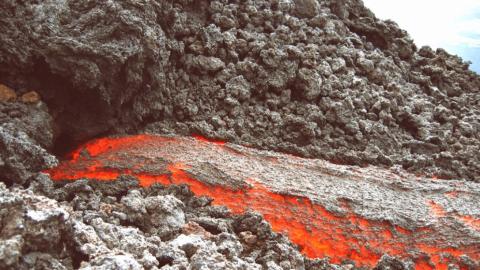Nicaragua Listening and Learning Trip: Day 4 (Tuesday)
0 comments
229 views

This post is part of a series of posts about a Madison Youth Listen and Learn Cross Cultural Engagement trip. You can read more about the purpose of the trip here in the blog post titled A Different Kind of Short-Term Missions Trip. You can also read about our first day in Nicaragua here, our second day here, and our third day here.
Another Day, Another Volcano - Tuesday, June 21, 2016
Today’s update about our fourth day in Nicaragua is written by Sam Fynewever:
Today’s agenda was dominated by three events: a presentation by Alcides (Paola’s dad), a stunning trip to Volcan Masaya, and a trip to the University of Nicaragua. As we drove along in our huge, air-conditioned van, I continued seeing constant parallels between Managua and Kathmandu, Nicaragua and Nepal: the same occasional street dog (though less of them here), the same aluminum-garage-door-secured storefronts, the same aluminum-roofed slums, the same snack peddlers, the same (again less) litter in the streets and the same nonstop advertisements (though in Spanish, much more comprehendible than the Nepali script).
Once we arrived at the Nehemiah Center, we hurried over to a blessedly air-conditioned and comfortably large room. Alcides showed and told us, Paola translating from Spanish, about his organization that sends Latin Americans as missionaries to the “10/40 window.” This refers to the geographical region between ten and forty degrees North latitude along Afro-Eurasia, the old world. There live two-thirds of the world’s population, 80% of the poorest of the world’s poor, along with the centers of three major world religions: Hinduism, Islam, and Buddhism. Barely any there are Christian, and Alcides sees this as no coincidence, citing a passage where Jesus talked about the blind seeing, the deaf hearing, the dead being raised, and the gospel preached to the poor. The link is obvious for the first three – their immediate, physical need is granted. He then extends that logic to the fourth, concluding that what the poor really need is the gospel – that if they have a heavenly Father, He will be able to take care of them. That’s of course not at all to say that they’ll look like developed countries right away if they become Christian: Latin America is overwhelmingly Christian and still very poor. However, Jesus can at least console their aching stomachs if not provide their daily rice and beans. Alcides also made very interesting points about the pragmatic advantages Latin American missionaries have over North Americans. For starters, they live in very similar socioeconomic contexts, Latin Americans live on about $2 a day and 10/40ers live on around fifty cents. They’re also not considered a threat by governments in countries in the 10/40 window, allowing them to get visas faster and easier. They even look more like the people there, allowing them to be accepted more readily.
This was followed by another car ride toward our next stop: Volcan Masaya! If your Spanish isn’t quite the best, en ingles significa Messiah Volcano. Some more solidarity with Nepal along the way, the huge hills formed by volcanoes resemble those around Kathmandu Valley. Having played Minecraft extensively and had my share of infuriating deaths in low-resolution lava, it was amazing to peer over the edge of the crater and just barely see and hear it IRL (non-Millennials: in real life). It glowed brighter red than a computer screen ever could, and more than bubbling and boiling as the virtual magma did, it barely audibly tossed and splashed around, like Lake Michigan one dune away. Due to the sulfur constantly smoking, though, we only were supposed to have ten minutes. After taking an illegal extra five to make sure a group picture happened, we all piled into our luxuriously cool van once again.
After another shot of developing-country nostalgia, noticing hexagonal concrete sidewalk tiles and stunningly colorful dwellings, we arrived at CECNIC (comunidad de estudiantes cristianos en nicaragua, community of Christian students in Nicaragua), a group that works to bring the gospel on college campuses, much like Intervarsity in the States. We took a silent tour throughout campus, going past portraits of revolutionaries on dorm walls, overhearing and partially comprehending students in lighthearted conversation, and watching a few ballet pieces in a dance recital – all without saying a single word. For some of us, of course, this was challenging, but as an introvert, it felt calming. Afterward, we sat and talked with the students giving us the tour, asking and answering questions (Paola again interpreting). One question in particular struck me: had any of the students there been brought to Jesus through their group? The answer: yes, two of them in fact had. I praised God that He truly is omnipresent, at work worldwide.
Faith Nurture
Faith Nurture
Faith Practices, Faith Nurture
Faith Nurture
Connect to The Network and add your own question, blog, resource, or job.
Add Your Post
Let's Discuss
We love your comments! Thank you for helping us uphold the Community Guidelines to make this an encouraging and respectful community for everyone.